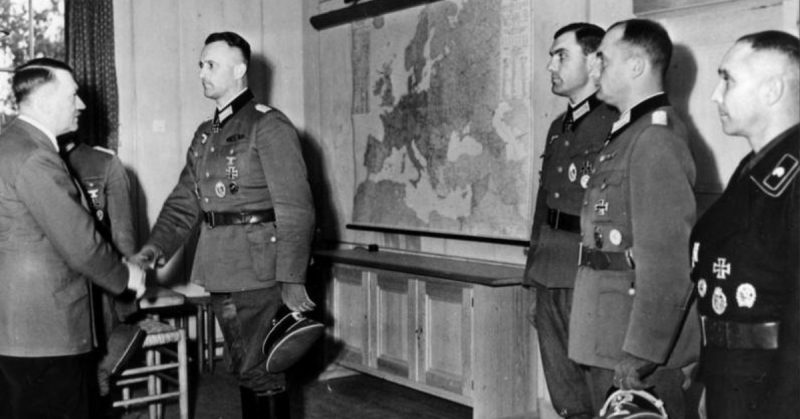For several generations, the Iron Cross was the most prestigious medal a German soldier could earn. During WWII, many received the Cross, which was awarded in several grades.
Here are some of those men.
Heinz Guderian
Guderian was one of the great innovators of tank combat. He used his WWI experience, including time working in signals, to push forward German tactics. Once the war started, he led panzer forces in some campaigns, proving his skill not just as a tactician but as a commander in the field.
During the invasion of Poland, Guderian raced across the country with speed and efficiency. Along the way, he recorded the defects of tanks so he could learn from the experience. In the invasion of France, he commanded a swift advance that split the Allied forces in two. In Russia, Guderian commanded some of the most successful maneuvers in a series of unfortunate campaigns. Despite repeatedly clashing with his superiors and openly arguing with Hitler, Guderian was so successful he was awarded the Knights Cross of the Iron Cross with Oak Leaves.
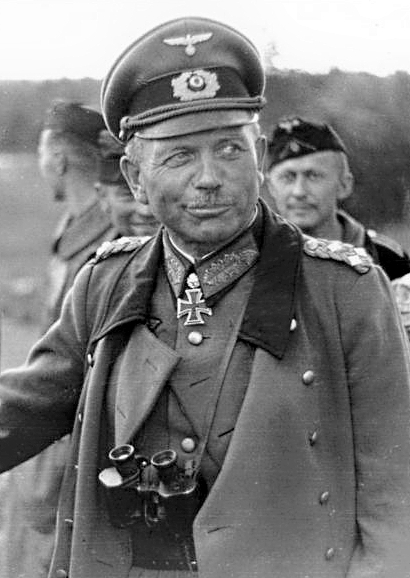
Otto Skorzeny
As the leader of the elite Hunting Group, Skorzeny was Germany’s most famous commando.
His most spectacular exploit took place in 1943. As Italy switched over to the Allied side, he led the group sent to rescue Mussolini from the new government. He tracked the former dictator to a mountain resort, then led an assault by paratroopers, involving glider landings on a small, broken patch of ground. As his men recovered from the landing, he single-handedly stormed into the building where Mussolini was being held. The guards surrendered, and he rescued the dictator.
For his courage and daring in the critical mission, he earned the Knight’s Cross of the Iron Cross.
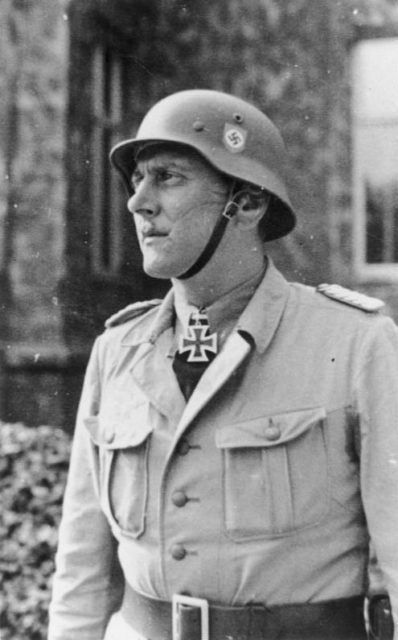
Rudolf Witzig
A young paratroop officer, Witzig earned his first three Iron Crosses for a single action.
On May 10, 1940, he led the paratrooper assault on the Belgian Fortress of Eben Emael. It involved landing gliders on the small space of the Fortress’s roof, destroying its gun cupolas, trapping the garrison inside, and forcing their surrender. His swift success in carrying out the mission and in follow-up actions made him a hero amid the German military.
Like other officers involved in strategic strikes in Belgium that day, Witzig was recommended for the Knight’s Cross of the Iron Cross. It could only be awarded after the Iron Cross Second Class and the Iron Cross First Class. To get around the problem, he was awarded the Knight’s Cross and then awarded the other two retroactively.
Michael Wittmann
A tank commander of rare skill and courage, as well as a bold leader of his unit, Wittmann, destroyed a remarkable number of enemy tanks and armored fighting vehicles – 117 on the Russian Front alone. In the summer of 1944, he launched a spectacular surprise attack against Allied tanks at the town of Villers-Bocage in France. He single-handedly devastated the Allied column before returning with reinforcements to take the village. By the time of his death in action in August 1944, he had earned the Knight’s Cross of the Iron Cross with Oak Leaves and Swords.
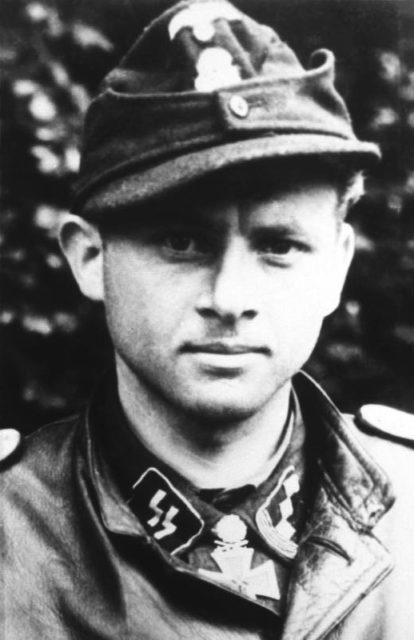
Friedrich August Freiherr von der Heydte
Despite having once faced legal trouble for beating up a Nazi, Heydte became one of the most senior and respected paratroop commanders. He took part in the invasion of Crete, the largest paratroop invasion ever attempted; fought in North Africa and Russia; was part of the first response to D-Day in Normandy; and ended the war in captivity after leading a daring but doomed paratroop action in the Battle of the Bulge. He was repeatedly wounded in action.
For his many achievements, Heydte was awarded the Iron Cross with Oak Leaves.
Lothar Rendulic
An Austrian who reached senior command as part of the German army, Rendulic came into his own in the later years of the war. As the momentum of German expansion faltered and the Reich began to face real challenges, Rendulic was sent from one difficult situation to another. He oversaw the capture of Italian forces in the Balkans as Italy switched sides, then led German attempts to deal with Tito’s rising partisan army. When Finland made peace with Russia and German forces had to be rushed out of the country, Rendulic saved an entire army through his carefully planned evacuation. During the dying days of the war, he led Army Group South, eventually ensuring that the Americans captured hundreds of thousands of his troops, rather than the Russians – the preferred option of most German soldiers.
In January 1945, Rendulic had swords added to a Knight’s Cross already decorated with oak leaves.
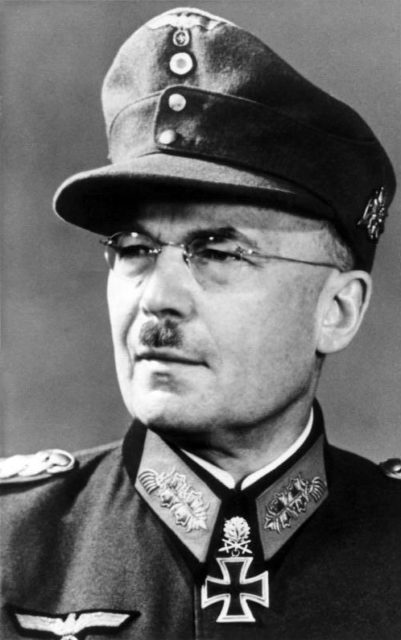
Hyazinth von Strachwitz
Known as the Panzer Count, Strachwitz was a daring tank commander. He spent much of the war on the Russian front. There he achieved tactical victories even as the army faced strategic defeats. On one occasion, he and his unit spent a night of terrible tension hidden in a village full of Russian tanks, so that they could burst out and ambush them at dawn.
During one early mission, while Soviet infantry surrounded his unit, Strachwitz leaped from his tank to defend a damaged machine and its crew. While attacking the Russians, he was hit by a bullet. He had it cut out then went straight back to the fighting.
Strachwitz had already earned the Iron Cross in WWI, for a spectacular long-range raid into France and his escape attempts as a POW. During WWII, he was awarded the Knight’s Cross with Oak Leaves, Swords, and Diamonds.
Sources:
James Lucas (1996), Hitler’s Enforcers: Leaders of the German War Machine 1939-1945
David Rooney (1999), Military Mavericks: Extraordinary Men of Battle
